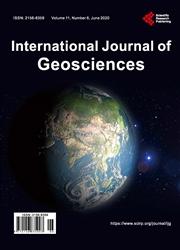A Case Study of Ocean-Atmosphere Interactions during the Passage of an Extra-Tropical Cyclone in the Vicinity of Cape Hatteras, North Carolina
引用次数: 0
Abstract
The authors document the interaction of the atmosphere and ocean during the formation and passage of an Extra-Tropical Cyclone, which is a Nor-Easter, winter storm that formed in the southern apex of the Middle Atlantic Bight near Cape Hatteras North Carolina, between February 15 and 18, 1996. While Nor-Easters per se, which have formed along the Atlantic Eastern Seaboard of the United States have been studied for decades, the actual atmospheric-oceanic mechanics and thermodynamics in the formation of a Nor-Easter has never been documented. We report on having done so with in-situ observations and data-based calculations and a numerical model. The in-situ observations were made via a Control Volume consisting of an array of Eulerian Oceanic-Atmospheric Moorings with current meters, temperature and salinity sensors and meteorological towers. We find that Gulf Stream waters were located surrounding the mooring array, and that with the invasion of cold dry atmospheric air, there was a rapid loss of heat from the ocean to the atmosphere via latent and sensible surface heat flux during the cyclogenesis onset of the storm. A unique feature of this storm was that neither satellite nor buoy data showed significant sea surface cooling in the control volume. The findings indicate that storm winds drove warm saline waters from the Gulf Stream across the continental shelf into the control volume, accounting for a 51 cm rise in water level along the coast. This lateral heat advection provided heat to the control volume of 3.4e+18 Joules. On average, the heat loss at the surface of the control volume, via sensible and latent heat fluxes and radiation, was 0.7e+18 Joules, corresponding to a surface heat flux of -600 Watts per Meter2 (W/m2). However, the heat lost by the control volume as latent and sensible heat fluxes was less than the heat it received via lateral heat advection, resulting in the lack of an often-observed sea surface cooling during other winter storms. The serendipitous and detailed observations and calculations reveal a climatological flywheel in this region, documenting the role of ETCs in the global heat balance.北卡罗莱纳哈特拉斯角附近热带外气旋通过期间海洋-大气相互作用的个案研究
作者记录了1996年2月15日至18日在北卡罗莱纳哈特拉斯角附近的中大西洋湾南端形成的一场东北冬季风暴——热带外气旋形成和通过过程中大气和海洋的相互作用。虽然人们对沿美国大西洋东海岸形成的东北气旋本身进行了几十年的研究,但东北气旋形成过程中实际的大气-海洋力学和热力学却从未被记录在案。我们报告通过现场观测和基于数据的计算以及数值模型已经做到了这一点。现场观测是通过一个控制体进行的,该控制体由一系列欧拉海洋-大气系泊装置组成,配有流速计、温度和盐度传感器以及气象塔。我们发现墨西哥湾流水域位于系泊阵列周围,并且随着冷干大气的入侵,在风暴的气旋形成开始期间,海洋通过潜热通量和感地表热通量迅速向大气损失热量。这次风暴的一个独特特征是,卫星和浮标的数据都没有显示出控制体积的海面明显冷却。研究结果表明,风暴将墨西哥湾暖流的盐水吹过大陆架,进入控制体积,导致沿海水位上升51厘米。这种侧向热平流为控制体积提供了3.4e+18焦耳的热量。平均而言,控制体积表面通过感热通量、潜热通量和辐射的热损失为0.7e+18焦耳,相当于表面热通量为-600瓦/米2 (W/m2)。然而,作为潜热通量和感热通量的控制体积损失的热量少于通过侧向热平流接收的热量,导致在其他冬季风暴期间缺乏经常观测到的海面冷却。偶然和详细的观测和计算揭示了该地区的气候飞轮,记录了ETCs在全球热平衡中的作用。
本文章由计算机程序翻译,如有差异,请以英文原文为准。
求助全文
约1分钟内获得全文
求助全文

 求助内容:
求助内容: 应助结果提醒方式:
应助结果提醒方式:


